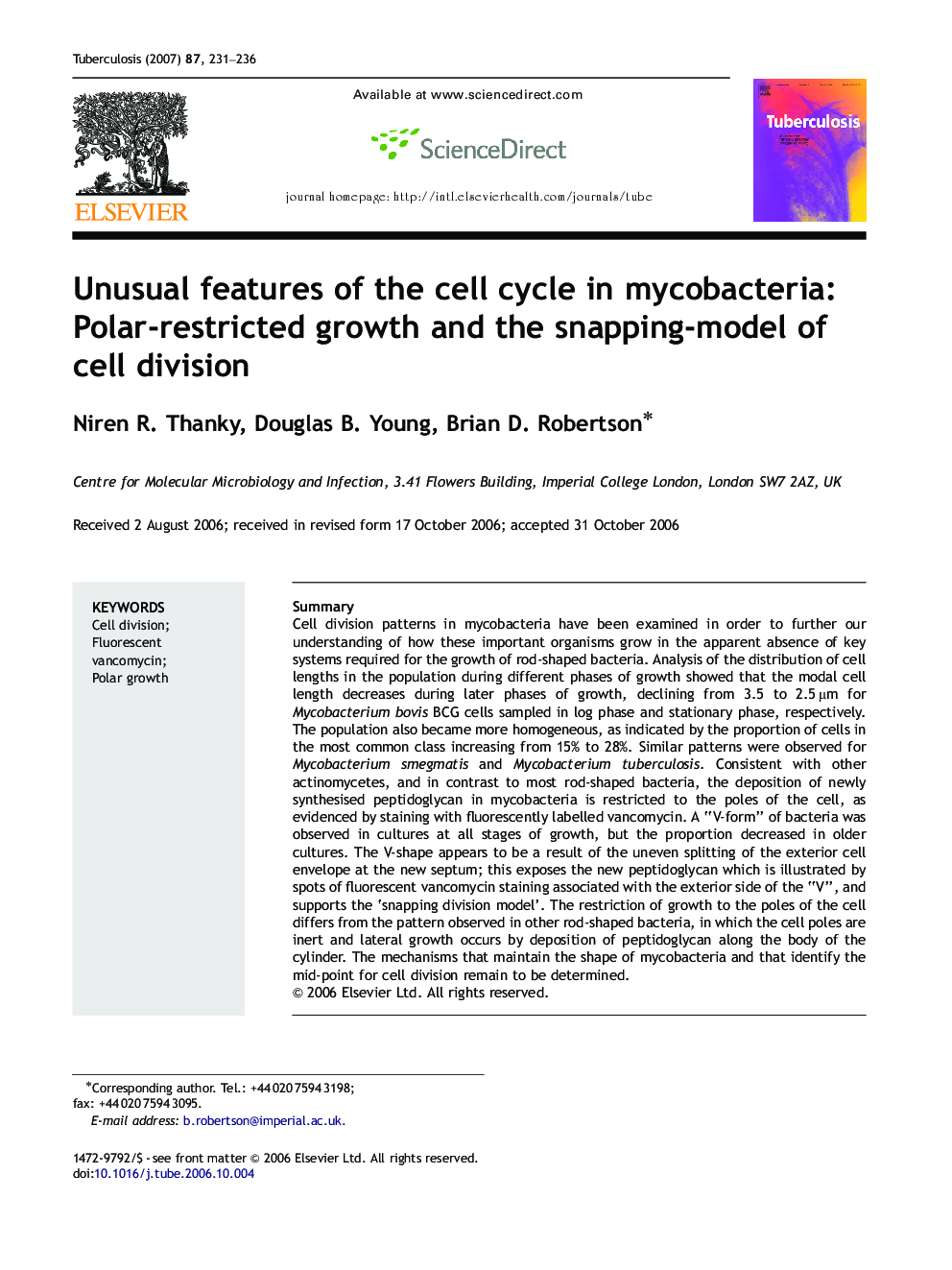| Article ID | Journal | Published Year | Pages | File Type |
|---|---|---|---|---|
| 2402097 | Tuberculosis | 2007 | 6 Pages |
SummaryCell division patterns in mycobacteria have been examined in order to further our understanding of how these important organisms grow in the apparent absence of key systems required for the growth of rod-shaped bacteria. Analysis of the distribution of cell lengths in the population during different phases of growth showed that the modal cell length decreases during later phases of growth, declining from 3.5 to 2.5 μm for Mycobacterium bovis BCG cells sampled in log phase and stationary phase, respectively. The population also became more homogeneous, as indicated by the proportion of cells in the most common class increasing from 15% to 28%. Similar patterns were observed for Mycobacterium smegmatis and Mycobacterium tuberculosis. Consistent with other actinomycetes, and in contrast to most rod-shaped bacteria, the deposition of newly synthesised peptidoglycan in mycobacteria is restricted to the poles of the cell, as evidenced by staining with fluorescently labelled vancomycin. A “V-form” of bacteria was observed in cultures at all stages of growth, but the proportion decreased in older cultures. The V-shape appears to be a result of the uneven splitting of the exterior cell envelope at the new septum; this exposes the new peptidoglycan which is illustrated by spots of fluorescent vancomycin staining associated with the exterior side of the “V”, and supports the ‘snapping division model’. The restriction of growth to the poles of the cell differs from the pattern observed in other rod-shaped bacteria, in which the cell poles are inert and lateral growth occurs by deposition of peptidoglycan along the body of the cylinder. The mechanisms that maintain the shape of mycobacteria and that identify the mid-point for cell division remain to be determined.
